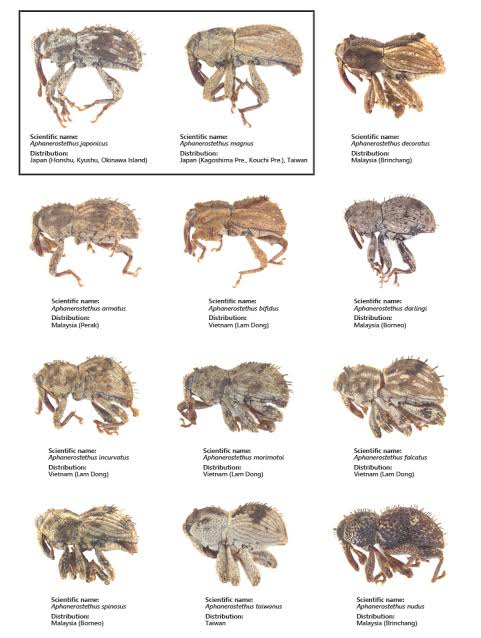Exploring the Hidden World of Weevils: New Species Discovered Using X-ray Microtomography

Jake Lewis, an entomologist with the Environmental Science and Informatics Section at the Okinawa Institute of Science and Technology (OIST), has made significant advancements in studying weevils—a group of beetles famed for their unique, trunk-like rostrum. These beetles, while diverse in function, from pollination to decomposition, also include species notorious for crop and forest damage. Utilizing x-ray microtomography, a cutting-edge imaging technique that allows scientists to see intricate internal structures without damage, Lewis and his team uncovered new insights into weevil morphology and taxonomy.
This technique enabled the researchers to digitally ‘peel back’ the scales of weevils to view their underlying cuticle structure, revealing significant differences between species that had previously been challenging to classify. Using a combination of microtomography, traditional light microscopy, and DNA barcoding, the team identified and named 12 new weevil species from Japan, Malaysia, Vietnam, and Taiwan. Among these discoveries are two new species in Japan, including *Aphanerostethus magnus* and *Aphanerostethus japonicus*—the latter inhabiting Okinawa’s Yanbaru National Park.
Novel Taxonomy Techniques
The use of x-ray microtomography for examining and distinguishing weevil species marks a first in the field, providing taxonomists with a tool to analyze the morphology of beetles hidden under scales or debris. Traditional approaches like light microscopy and dissection were also employed to examine specific physical traits, including leg spines, elytra scales, and rostral canal shape. DNA barcoding supplemented these findings, allowing for genetic analysis and construction of a phylogenetic tree, which confirmed the species' classifications.
One notable discovery pertains to the weevils’ hindwings: species within the genus *Aphanerostethus* have progressively lost their wings. X-ray microtomography enabled the team to examine these vestigial wings without invasive dissection, uncovering a fascinating glimpse into evolutionary biology. Some species have almost entirely lost their wings, while others retain partially developed, non-functional wings. "The varying degrees of hindwing reduction among these species not only help in taxonomy but also reveal different stages of a key evolutionary adaptation," Lewis explained.
Preserving Japan's Biodiversity
Lewis’ work highlights the immense challenge of studying weevil diversity. Weevils are extremely varied and specialized, often relying on single host plants or specific microhabitats and exhibiting unique behaviors. Some, for example, are only active at night or only inhabit certain tree canopy levels, making cataloging and discovery complex.
Dr. Dan Warren, a former leader in OIST’s Environmental Science and Informatics Section, emphasized the importance of investing in specimen collections. “These collections are crucial for documenting biodiversity and monitoring changes due to human and natural causes,” he said. Without support for specimen collections and the staff maintaining them, vital information on species and ecosystems could be lost.
"The discovery of these new weevil species is a small but important part of Japan’s natural heritage," added Lewis, noting that studying these species is essential to conserving Japan's unique biodiversity. Protected areas like Yanbaru National Park provide essential habitats for new and endangered species alike, helping preserve Okinawa’s rich and endemic ecosystem.
Story Source:
Materials provided by Okinawa Institute of Science and Technology (OIST) Graduate University. The original text of this story is licensed under a Creative Commons License. Note: Content may be edited for style and length.
Journal Reference:
- Jake H. Lewis, Hiroaki Kojima, Miyuki Suenaga, Dimitrios Petsopoulos, Yusuke Fujisawa, Xuan Lam Truong, Dan L. Warren. The era of cybertaxonomy: X-ray microtomography reveals cryptic diversity and concealed cuticular sculpture in Aphanerostethus Voss, 1957 (Coleoptera, Curculionidae). ZooKeys, 2024; 1217: 1 DOI: 10.3897/zookeys.1217.126626

0 Comments